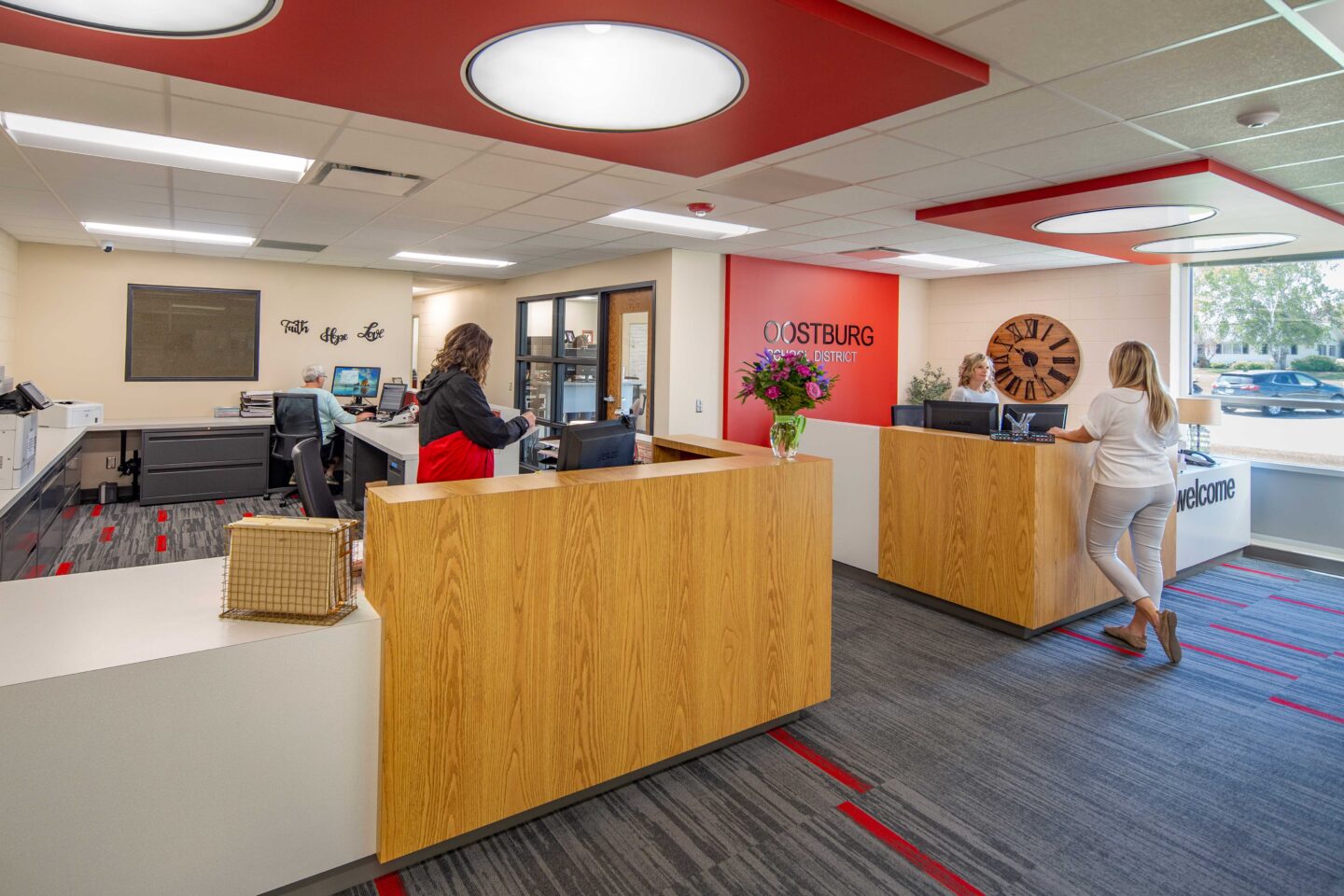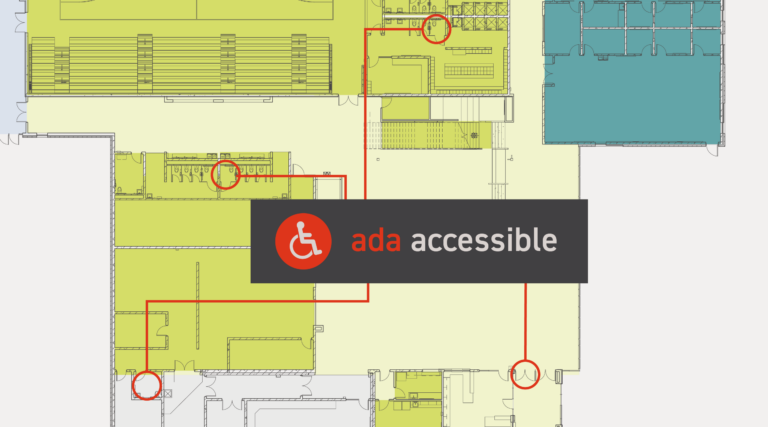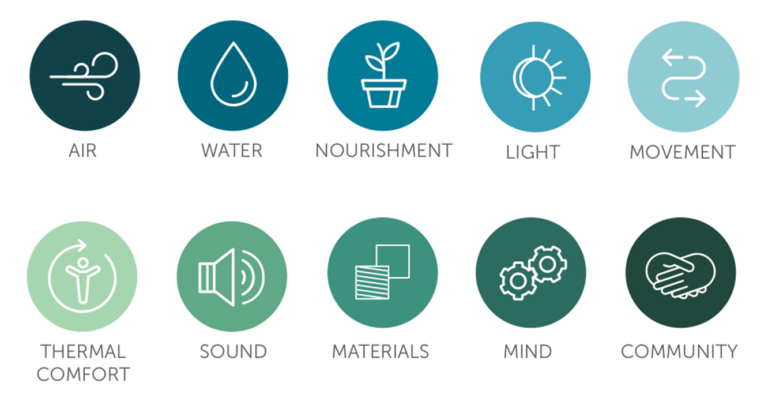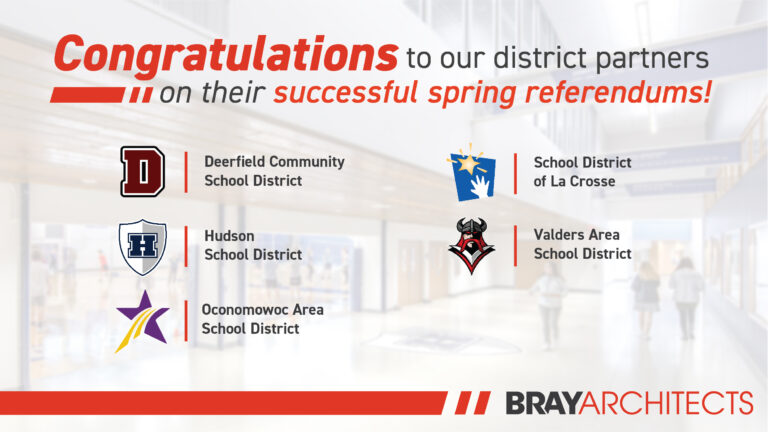Flexible Spaces and Shared Resources
Many schools operate on finite budgets, so it’s important to find solutions that maximize a school’s limited space and resources. These are some of the innovative ways in which we have helped schools create adaptable spaces that serve all users.
Extracurricular Learning Spaces
We’ve partnered with school districts to create dedicated spaces that support extracurricular exploration and growth, such as college and career readiness.
These spaces provide resources that many students may not be able to access at home or in their regular classrooms. They can also double as meeting rooms for staff or after-school groups.
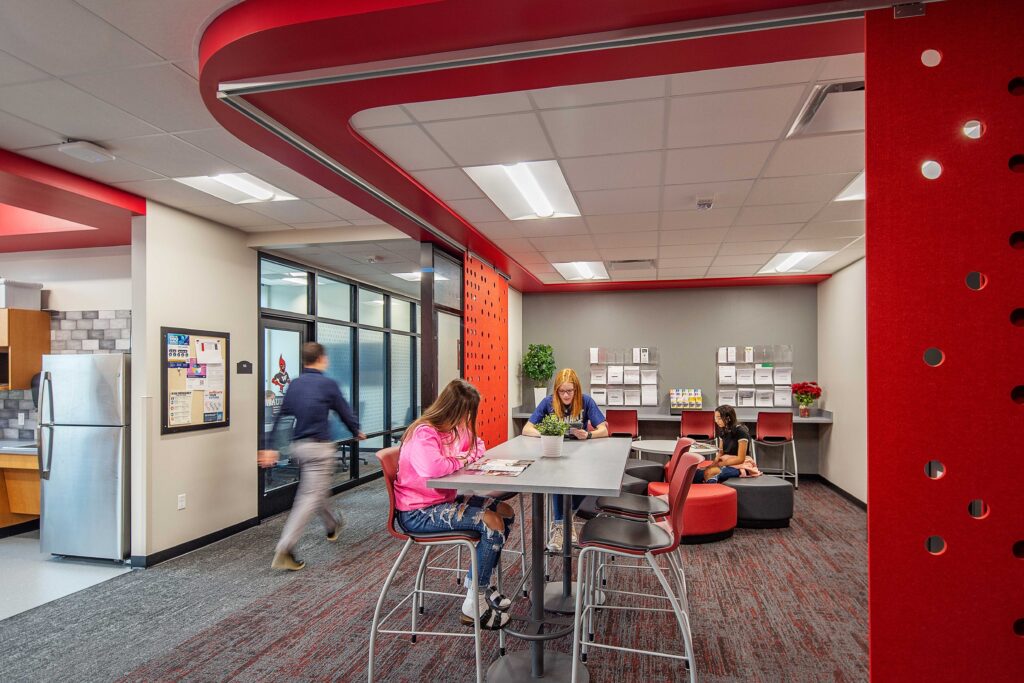
Flexible Workstations
Schools are workplaces for district staff and administrators, some of whom may work remotely or travel among all the schools in a district. When they come into the office, it’s important they have workstations that provide the space and resources they need to do their jobs well.
“There are a lot of mobile teachers and paraprofessionals that come through a school throughout the year, and they may not have a dedicated classroom,” says Kate Egan, an architect and design specialist at Bray. “There should be flexible spaces within the office to welcome those individuals and help them feel like they have a space within the building.” These amenities might include conference rooms, access to printers and other office equipment, lockers to store personal belongings, and hoteling stations – desks that are not assigned to one individual but are instead made available to staff as needed when they are working in the office.
Open Office Spaces
Many districts elect to have open office spaces, rather than cubicles, to increase visibility and flexibility of the area and encourage collaboration among staff. They provide sightlines to the front desk, allowing staff to share the responsibility of covering the desk when their co-workers are busy or out of the office.
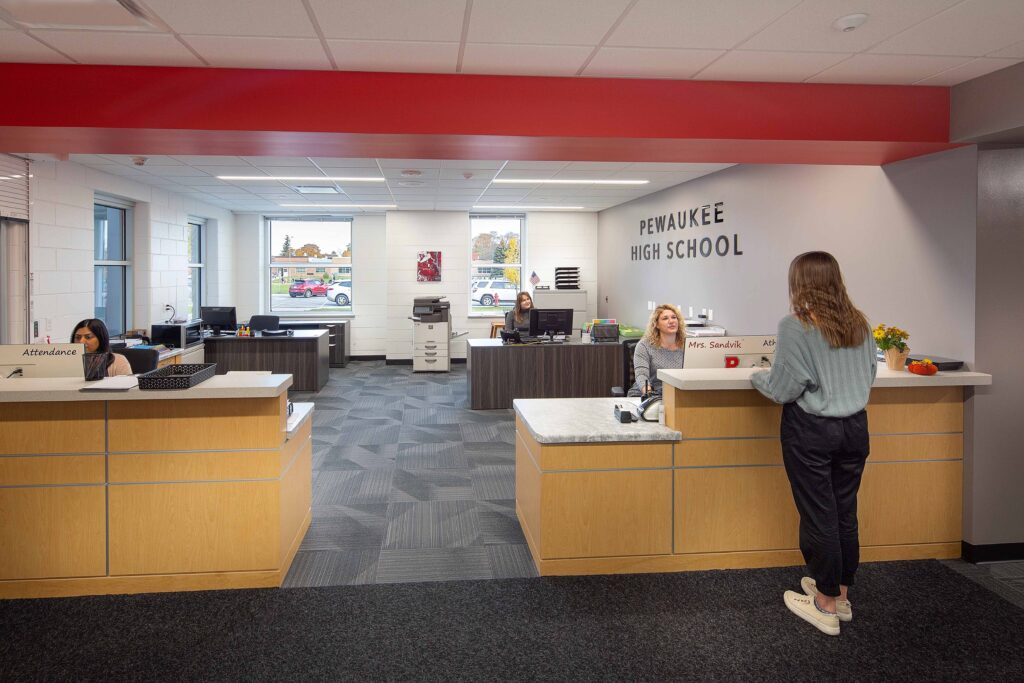
We also work with districts to provide ample meeting spaces to support collaborative work among teams of teachers and administrators. When they are not being used, staff can also step into these rooms if they need a break from the open office environment.
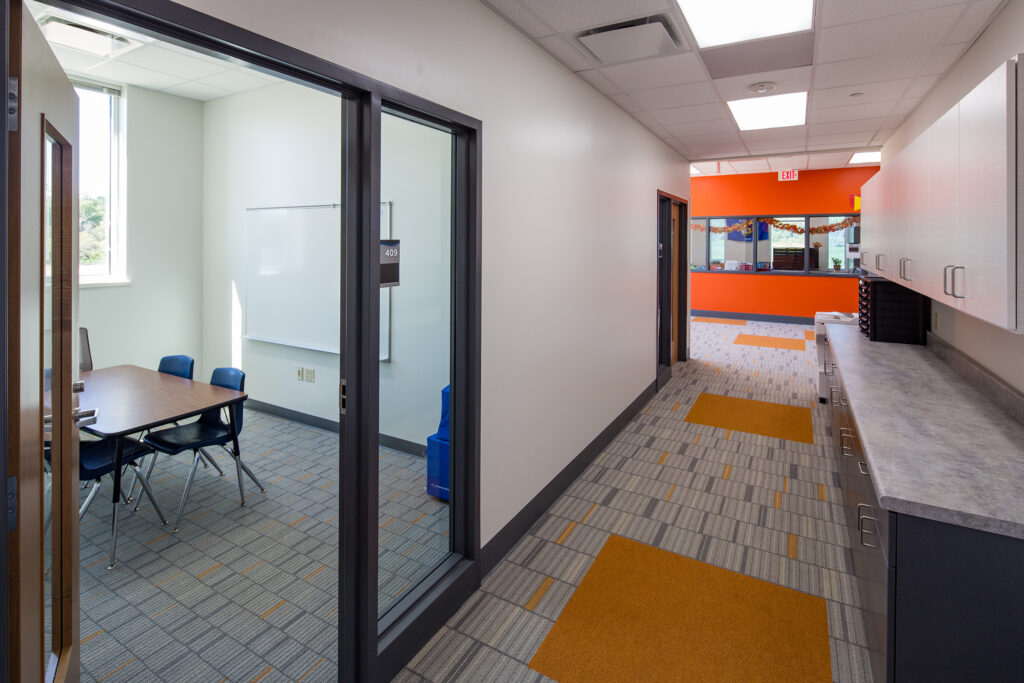
Finding the Sweet Spot
There is no universal solution for determining where the office should be in a school and how to arrange them in a floor plan. This will be different for every district based on its population and the size of their buildings.
Kate says that, ideally, the district will find a sweet spot where administrators and staff feel connected to all day-to-day operations.
Some districts may choose to combine their office spaces, including attendance, administrative, and student services, to maximize their resources. Different entrances help to separate the function of these offices for students. Staff-only doors that create a “back-of-house” connection make it easier for staff to travel between the offices and share resources like meeting rooms and equipment.
Other districts might decide to integrate separate offices throughout the building. “A lot of our larger schools are decentralizing their administrative offices. This means they have a presence at the front door, but also have offices spread out across the building. This enables some administrators to be closer to the classrooms,” says Kate.
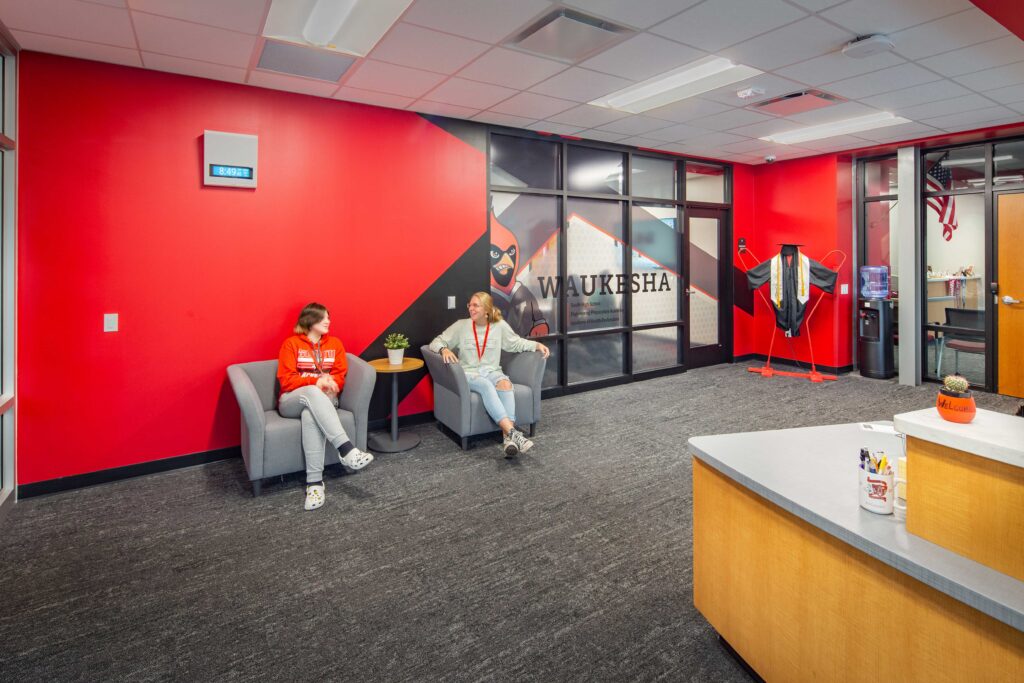
Sharing Spaces
Spaces like conference rooms can often serve both students and staff. Amenities like sliding glass partitions offer auditory privacy while still allowing staff to supervise student activity. Through careful planning in the design phases of your building project, we can help maximize your school’s budget and resources.
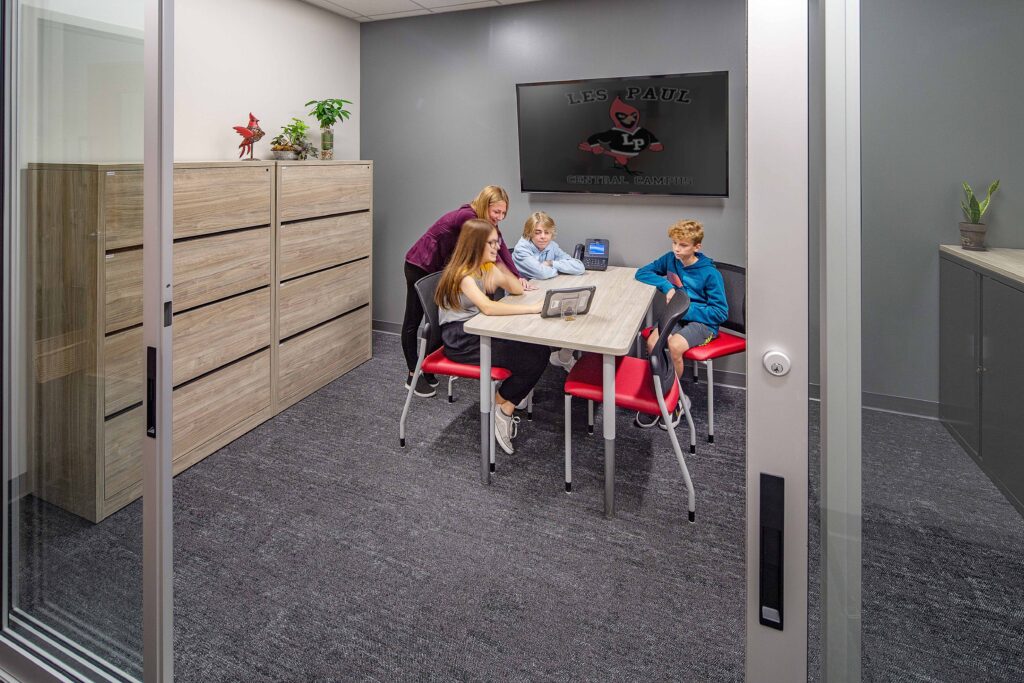
A Second Home
School offices are much more than just a place for student discipline and attendance. The most effective offices supplement classroom learning and offer healthy environments for students to build relationships with the district’s staff and administrators.
It’s also important to remember that offices are year-round workplaces for many of the district’s staff and administrators. By creating flexible spaces and offering shared resources, districts can ensure that they are supporting all their workers.
“A lot of students and staff might spend more time at school than they do at home,” says Kate. “Schools are a second home, so it’s important that we create spaces that are welcoming, comfortable, and safe.”
Let’s Work Together
Are you considering a new or renovated school office as part of your next building project? We’d love to hear from you. As your trusted partner, we’ll work closely with you to find the most thoughtful and adaptable solutions that fit your timeline and budget.
